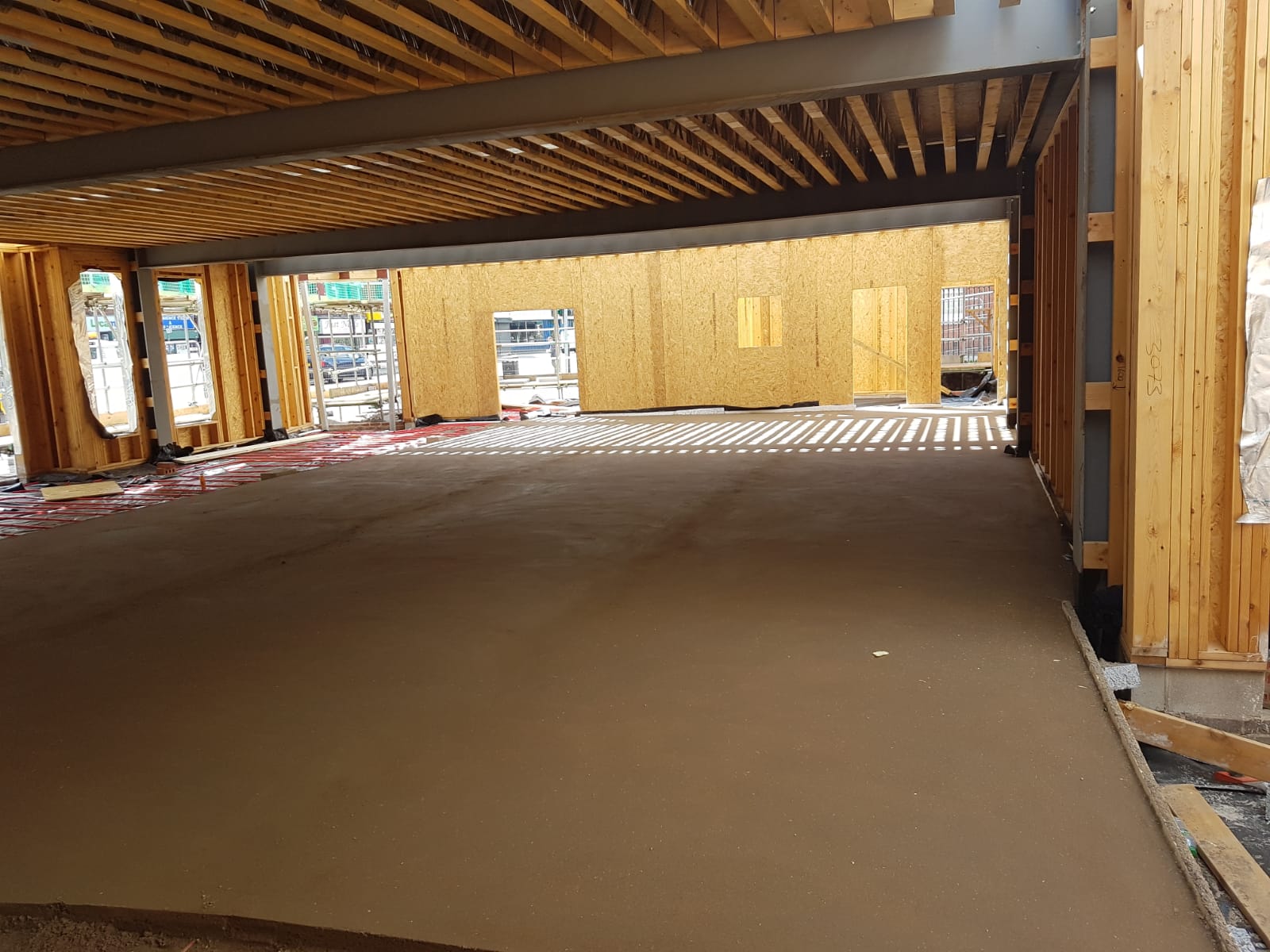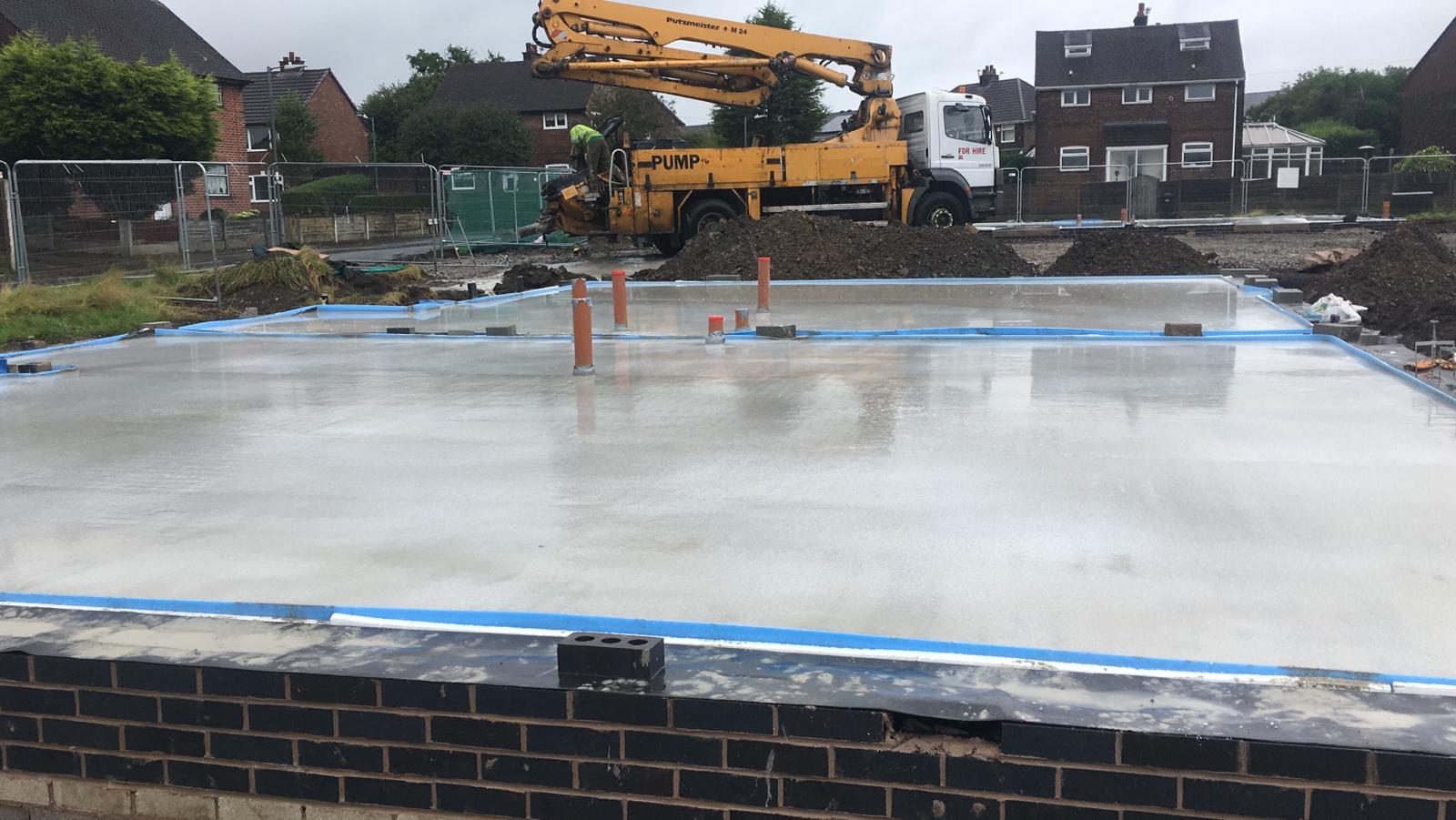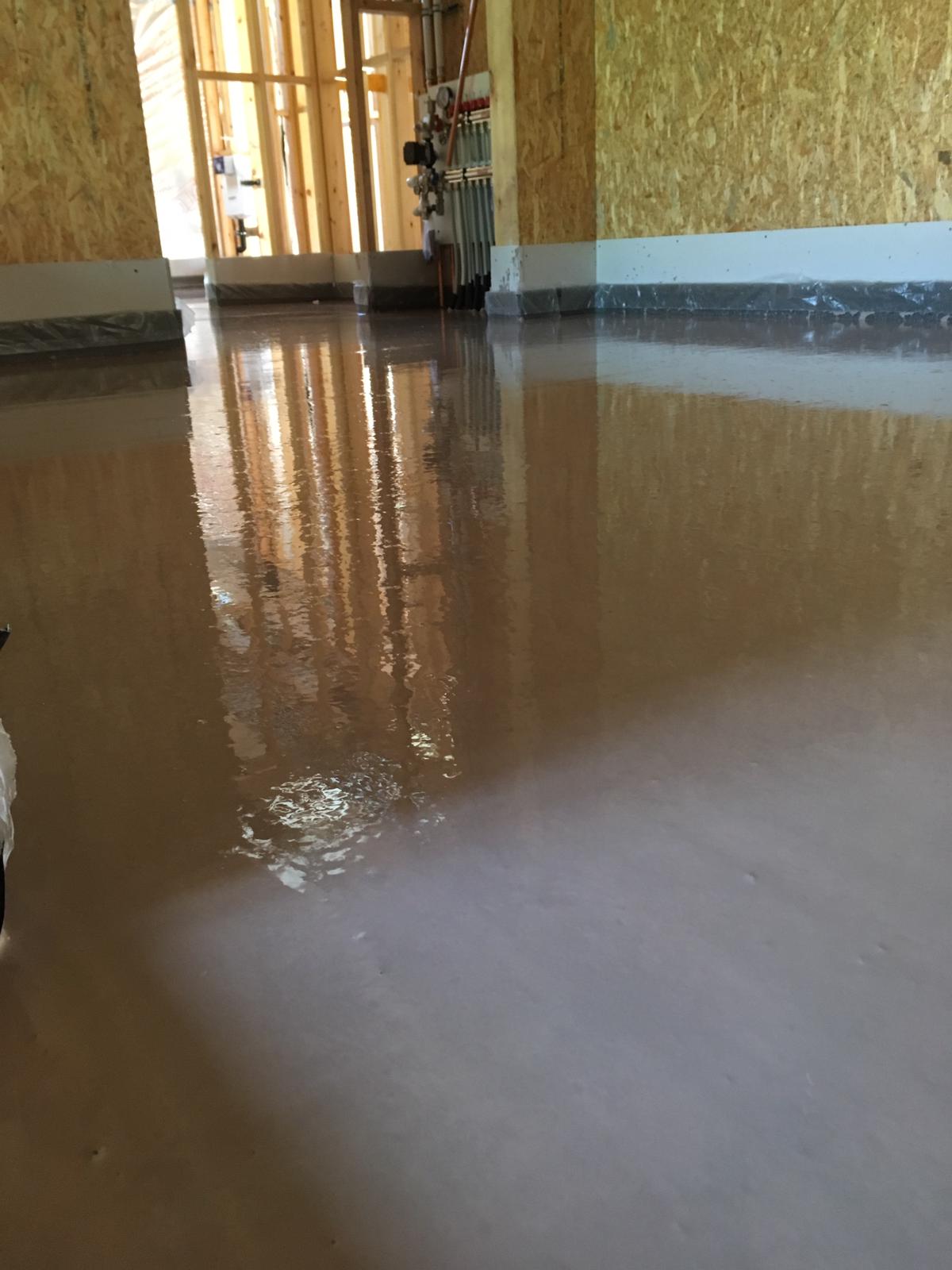Introducing Premier Screeds
Premier Screeds is a screeding company set up by the best people in our industry!
We are here to change the view of main contractors on screeding companies. Our ethos is to help you, the contractor, save time and money on your projects by delivering our package on time and within budget. Sounds simple, but you would be surprised how many sub contractors get this wrong.
At Premier Screeds we specialise in all types of screeds, insulations and membranes. Whether you need a rapid drying sand & cement screed, self compacting concrete, liquid screed or even just the standard 1:4 fibrescreed, we have the teams available to complete your job to the highest possible standard.
Our worksWe believe that your project is our project
Types of screed
01
Traditional screeds
With a high impact-resistance, traditional screed is cost effective, hard wearing and great for laying screeds where the floor needs to slope down to a drainage point.
Traditional screed drying time is calculated at one month per 25mm of screed thickness. Depths of screed over 50mm need to be allowed to dry for at least two months per 25mm of thickness. Substrates with a high moisture content, low ambient temperature and low temperatures will significantly increase drying times.
Hardening times for traditional screed are, for light foot traffic, 4 days and site traffic, 7 days. Low ambient temperatures may extend hardening times.

02
Self compacting flowing concrete
Self compacting flowing concrete can be laid thinner than traditional screed solutions without detriment to its performance so any underfloor heating pipes are closer to the surface (minimum cover to pipes 25mm).
It can be laid as a floating construction over most types of rigid insulation board or acoustic foam at a minimum thickness of 35mm in domestic applications.
Due to its self-compacting and fluid characteristics, large surface areas can be laid in just one day – up to 1,000m2.
Stronger than sand cement screed due to full compaction and no voids, cementitious flowing concrete requires no reinforcement and no
manual compaction.
Cementitious flowing concrete offers total flexibility. It is suitable for new builds and renovation work, unbonded, bonded or floating construction, residential and commercial, with or without underfloor heating, in wet or dry areas.
It is less prone to shrinkage than sand cement screeds and therefore requires fewer construction joints. Typically bay sizes of up to 150m2 without the need for construction joints.
Excellent surface regularity to minimum SR2 and capable of receiving floor coverings such as tiles, wood carpet, vinyl and other toppings as listed in BS8203:2001. No sanding or other surface preparation required before applying floor finishes.

03
Liquid screeds
Liquid screed is pump applied due to its fluid consistency. This means that it is easier to lay, covering areas in excess of 1,000m2 in a day. It is also thinner than conventional screeds making it the natural choice for underfloor heating systems.
Floors are suitable for foot traffic within just 24-48 hours, while drying takes just 40 days, or sooner with force drying (available after only 7 days).
The high thermal conductivity and minimum thickness of liquid screed make it ideal for use with underfloor heating. Furthermore, because it’s free from protein and doesn’t harbour potentially harmful bacteria, it’s an excellent choice for hospitals and care homes.
Liquid screed is stronger than sand cement screed, requiring no reinforcement and no manual compaction.
It can be used for both new builds and renovation work, with or without underfloor heating and with an unbonded, bonded or floating construction.
Being less prone to shrinkage than sand cement screeds, liquid screed requires fewer construction joints. It also gives an excellent surface finish, capable of receiving floor coverings such as tiles, wood carpet, vinyl and other toppings as listed in BS8203:2001.

Project process
1
Pre start site inspection
2
Prepare the sub floor for screeding
3
Screed the floor with the clients choice of product
4